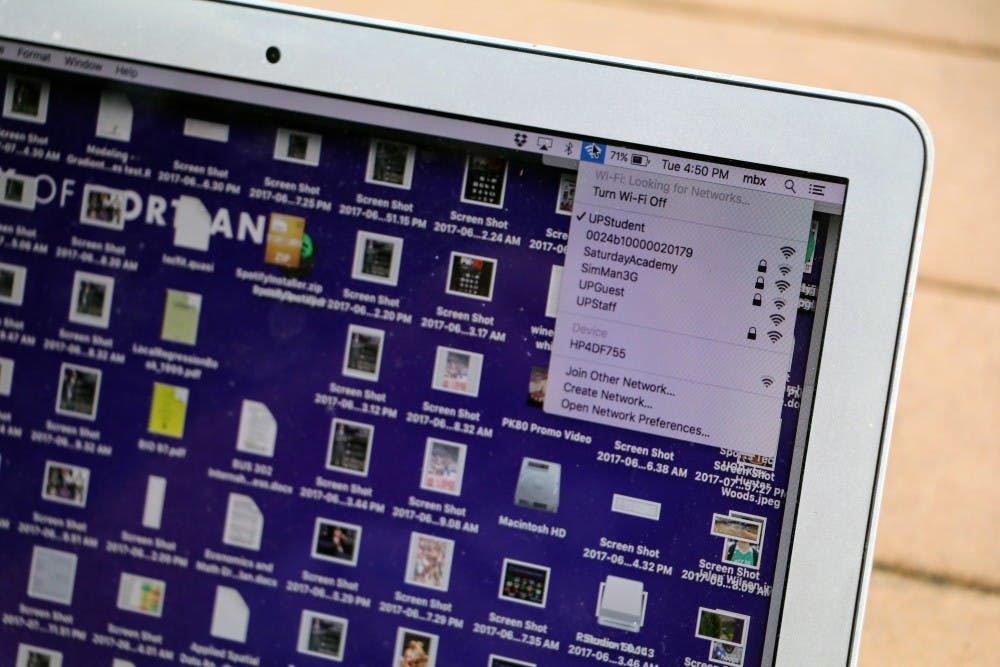Our phones, tablets, laptops, classrooms and even The Beacon are all powered by the University’s WiFi. So why is it so slow? Don’t worry, the University is working on it. The Beacon spoke to the Director of Technical Services Michelle Sunderland for more information about the latest WiFi updates.
The University is exploring two projects to improve WiFi quality on campus.
The first project is an upgrade of the WiFi access points. Have you noticed WiFi droppage outdoors near Beauchamp and Fields and Schoenfeldt? That’s exactly where the new access points will be.
“There will be an increase in wireless access points outside,” said Maggie Longo, residential computing consultant coordinator.
Student identification of WiFi problem areas helps Sunderland’s team find and fix the problem. They also use heat mapping cameras to discern the weakest spots. The more heat in one area, the better the WiFi coverage. This allows technology services to find the ultra-specific WiFi weak spots.
“We are always working to enhance the WiFi,” Sunderland said. “It is just a continual upgrade process.”
These access point additions will add to the density of WiFi coverage. Basically, this means it will increase the amount of devices that can connect to a certain access point at a time. This will then facilitate connecting to WiFi across campus.
WiFi in the academic quad is more congested during class hours; however, it peaks in the late afternoon.
“It will make the WiFi experience better,” Sunderland said of the new upgrades.
The cost of WiFi upgrades are consistently worked into the university budget and made a priority, according to Sunderland.
The second project is focused on increasing the network speed. This will be done by upgrading the internal hardware later this month. Sunderland estimates this project will be finished by fall break.
Currently, there are two network providers for The Bluff. The smaller of the two is for faculty and staff, while the larger is dedicated to students. The physical network fiber for the student’s network will be expanded.
“We want to make sure we are meeting the demand on the student side and not encroaching on what’s needed for the academic and business units, the faculty and staff side,” Sunderland said of the process.
Thanks to the evolving and ever improving network technology, the costs of this expansion are becoming more affordable, Sunderland said. The funding for this project is coming from the same budget as the WiFi access points.








